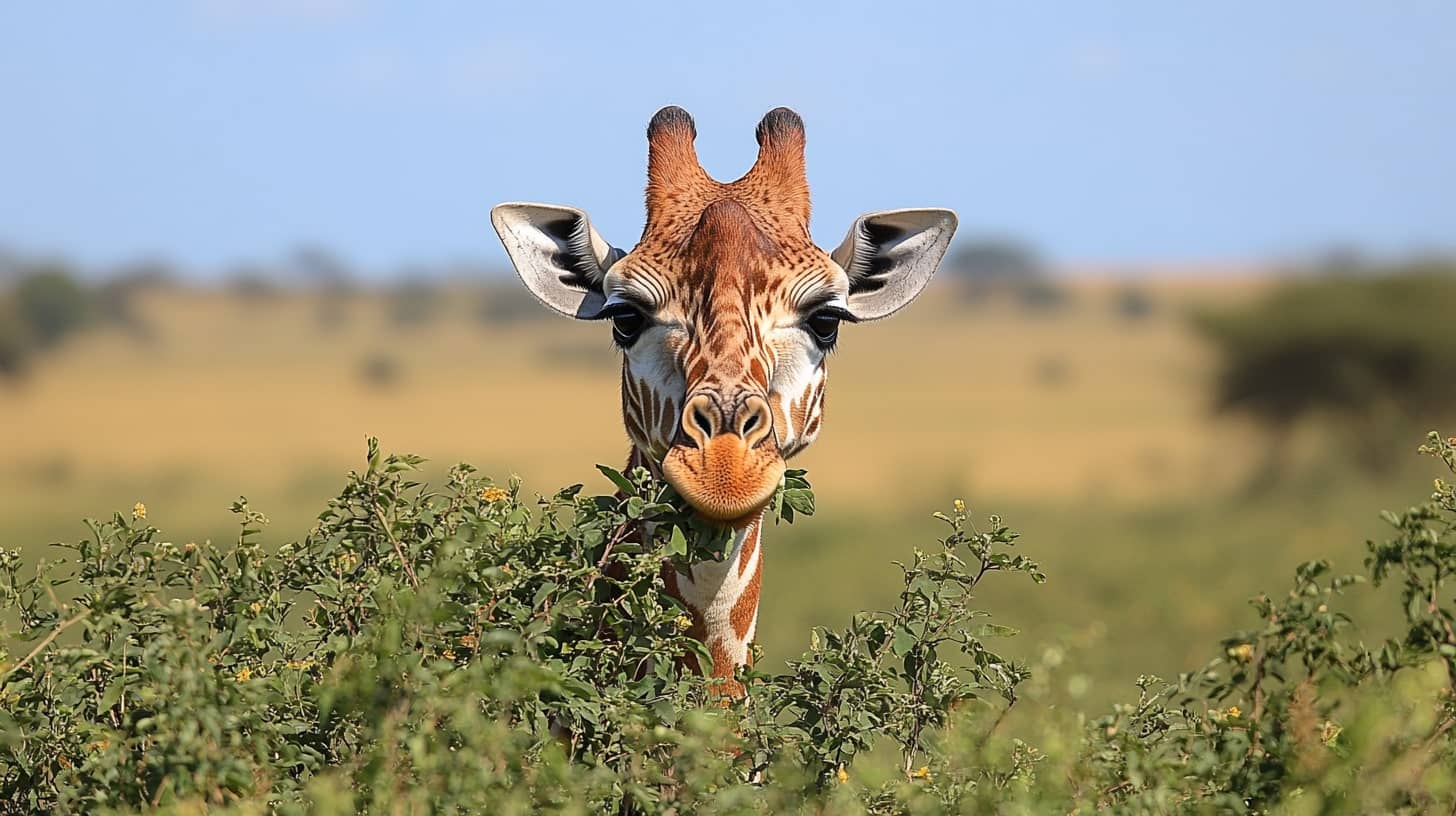The African wilderness is home to some of the most iconic wildlife in the world, and among its towering inhabitants is the giraffe. Known for their long necks, unique spotted patterns, and gentle demeanor, giraffes are both majestic and fascinating creatures. These animals roam the savannas, woodlands, and grasslands of Africa, playing a vital role in their ecosystems while captivating the hearts of all who see them.
In this article, we’ll explore the life of giraffes in the wild, their habitats, social structures, and the challenges they face in their natural environment.
The Habitat and Range of Giraffes
Giraffes are native to sub-Saharan Africa and can be found across a range of habitats, from arid savannas to lush woodlands. Their favorite environments include areas with plenty of acacia, mimosa, and other trees that provide both food and shelter. While giraffes are often associated with open plains, they also thrive in areas with scattered trees and dense vegetation.
Within these landscapes, giraffes play an essential ecological role. By feeding on the upper branches of trees, they help shape the vegetation, promote new growth, and create opportunities for other species to feed on lower foliage. Their grazing habits ensure that certain plant species do not dominate, maintaining a balanced ecosystem.
Physical Adaptations: Nature’s Towering Marvels
The giraffe’s unique anatomy is perfectly adapted to its environment. Their iconic long necks, which can reach up to 6 feet in length, allow them to access leaves and shoots that are out of reach for most other herbivores. Despite their impressive length, giraffes have the same number of neck vertebrae as humans—seven—but theirs are much larger and more elongated.
Their prehensile tongues, which can extend up to 20 inches, are another incredible adaptation. These strong, flexible tongues are used to grab and strip leaves from branches, particularly from thorny acacia trees. The dark coloration of their tongues also helps prevent sunburn during their long hours of feeding.
Giraffes are equipped with powerful legs that can reach lengths of up to 6 feet, allowing them to travel great distances in search of food and water. Their height also provides them with an excellent vantage point, helping them spot predators like lions, leopards, and hyenas from afar.
Social Behavior and Group Dynamics
Giraffes are social animals that often form loose groups known as towers. These groups can range from a few individuals to as many as 20 or more, and they are typically fluid, with members coming and going as they please. While females and their young tend to form the core of these groups, adult males are more solitary, often wandering between groups.
Within these towers, giraffes communicate using a range of vocalizations, body language, and even infrasound—a low-frequency sound that humans cannot hear. Mothers are particularly attentive to their calves, nurturing and protecting them while teaching them how to navigate the world.
Male giraffes, on the other hand, engage in a behavior called “necking” to establish dominance. This involves swinging their necks and using their heads like hammers to strike their opponents. The victor earns the right to mate, while the defeated male retreats.
Feeding Habits and Daily Life
Giraffes spend the majority of their day feeding, consuming up to 75 pounds of leaves, twigs, and fruits daily. Their preference for acacia trees is well-known, and their long tongues and specialized teeth allow them to eat even the thorny branches with ease.
Drinking water, however, is a less frequent activity. Due to their height and the awkward position required to lower their heads, giraffes are vulnerable to predators while drinking. To minimize this risk, they can go days or even weeks without water, obtaining most of their hydration from the moisture in their food.
Despite their size, giraffes are surprisingly graceful and can run at speeds of up to 35 miles per hour over short distances. Their long strides allow them to cover vast areas in search of food and water.
The Challenges of Survival
While giraffes are iconic symbols of Africa’s wildlife, they face numerous threats in the wild. Habitat loss due to agriculture, urbanization, and deforestation is one of the primary challenges. As human activities encroach on their habitats, giraffes are forced into smaller, fragmented areas, limiting their access to food and water.
Poaching and illegal hunting also pose significant risks. Giraffes are hunted for their meat, hides, and tails, which are sometimes used as tools or decorations. Additionally, climate change has made some regions more arid, reducing the availability of food and water.
Conservation efforts are underway to protect giraffe populations. Organizations are working to establish protected areas, monitor populations, and raise awareness about the importance of these gentle giants. Ecotourism also plays a role in supporting conservation by generating funds and fostering appreciation for Africa’s unique wildlife.
The Beauty of Giraffes in the Wild
Watching a giraffe in its natural habitat is a breathtaking experience. Whether it’s a mother guiding her calf through the savanna, a group feeding under the golden African sun, or a male engaging in a necking duel, giraffes embody grace, strength, and resilience. They are a living testament to the beauty and diversity of life in Africa.
For first-time safari-goers, giraffes often steal the spotlight. Their towering presence and serene demeanor make them a favorite subject for photographers and wildlife enthusiasts alike.
Conclusion
The life of giraffes in the wild is a remarkable story of adaptation, survival, and beauty. These gentle giants play a crucial role in maintaining the health of their ecosystems while captivating the hearts of those lucky enough to witness them. However, their future depends on our ability to protect their habitats and address the threats they face.
By supporting conservation efforts and raising awareness, we can ensure that giraffes continue to roam the African wilderness for generations to come. Whether you’re exploring the savannas or admiring these creatures from afar, the giraffe’s story is one of nature’s most inspiring tales.
